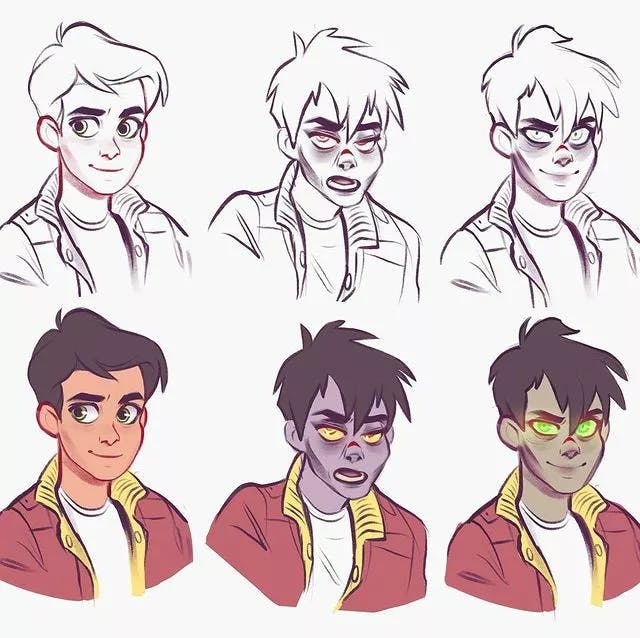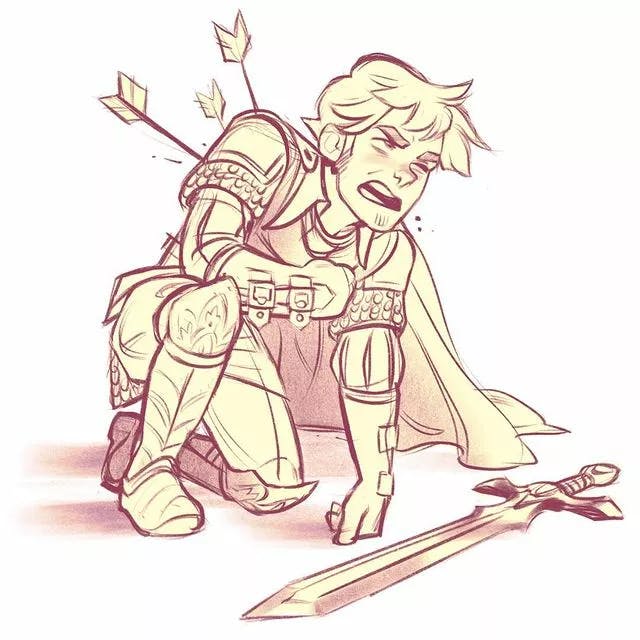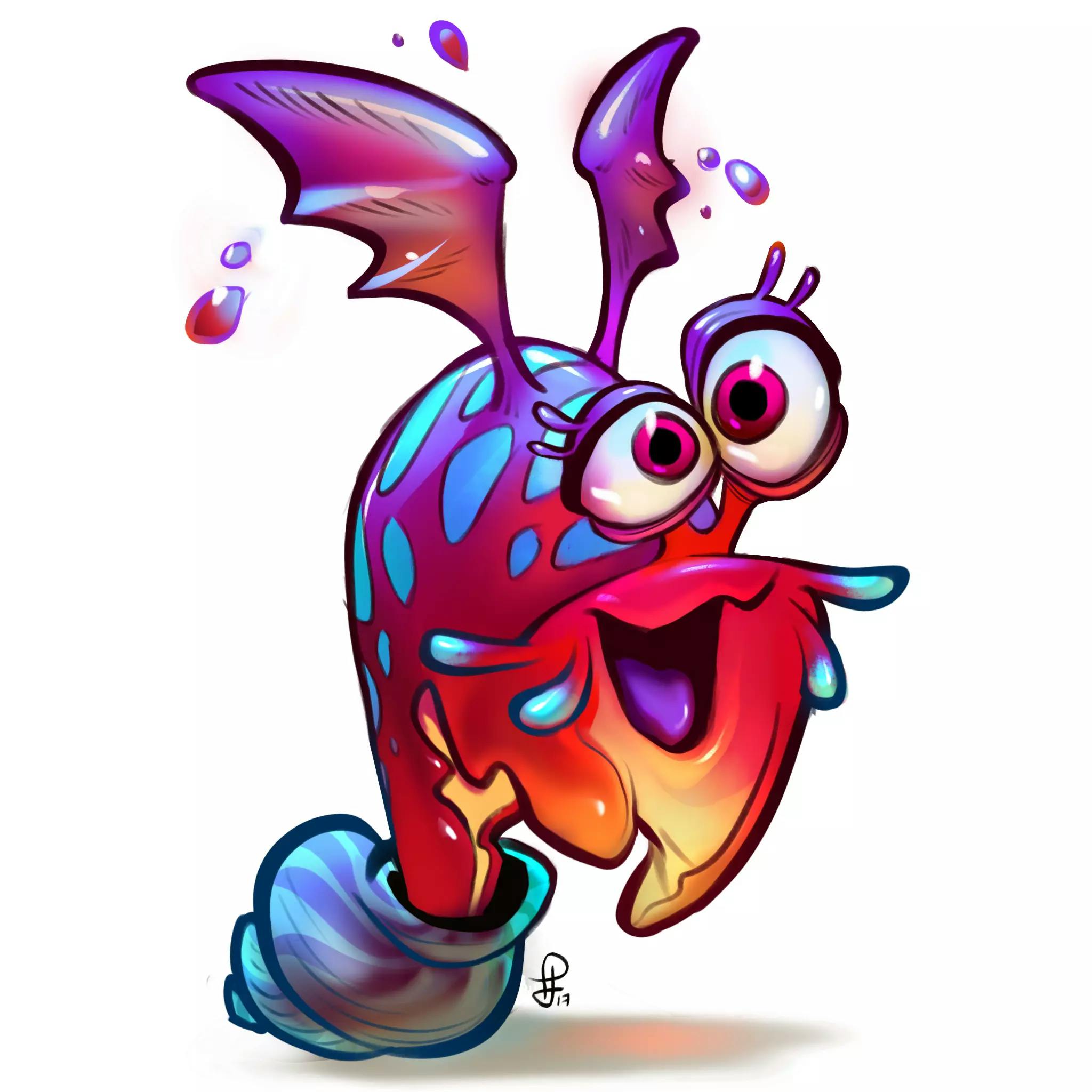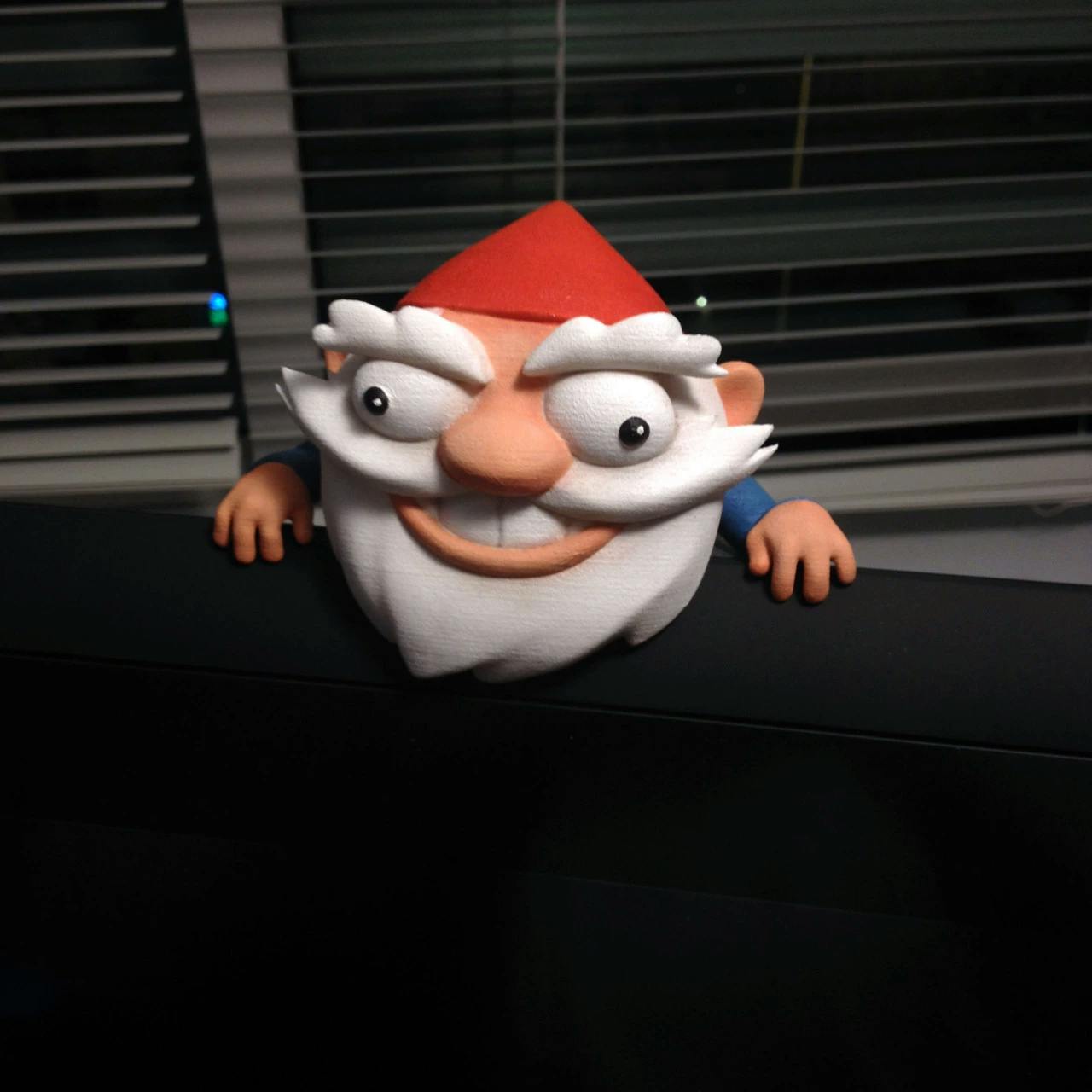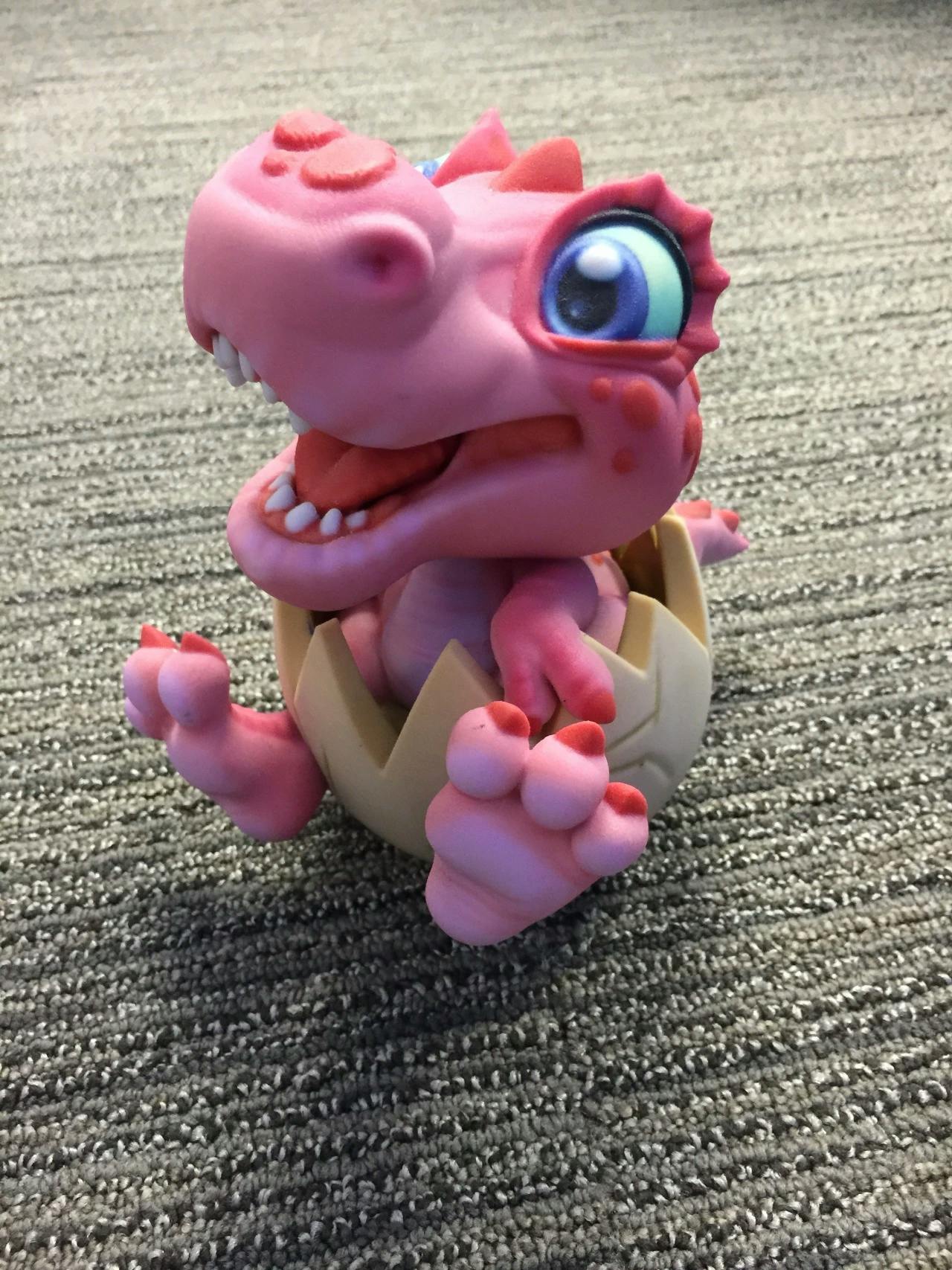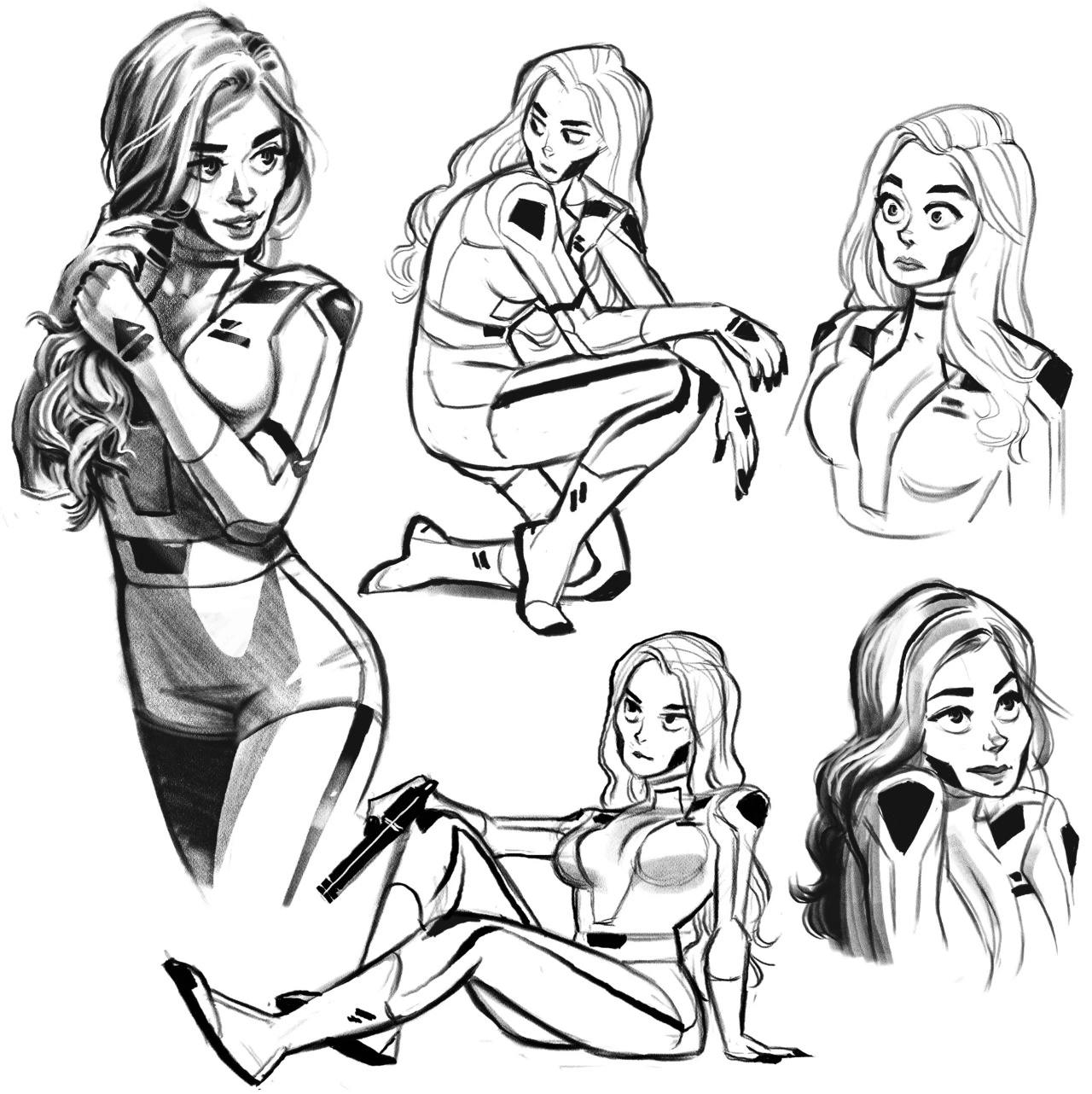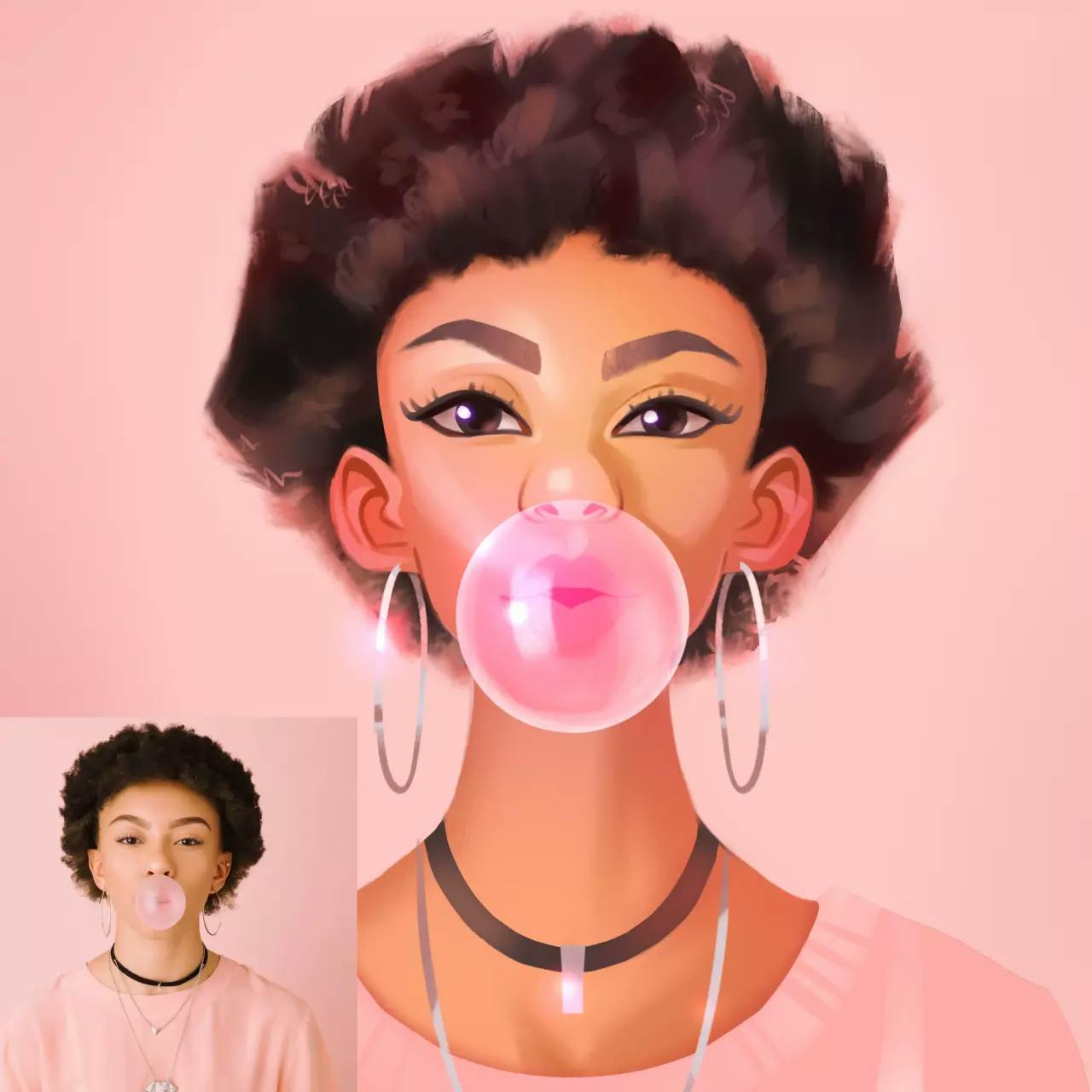Kafai Mak
Creative Director
Web Designer
Art Director
Generative AI
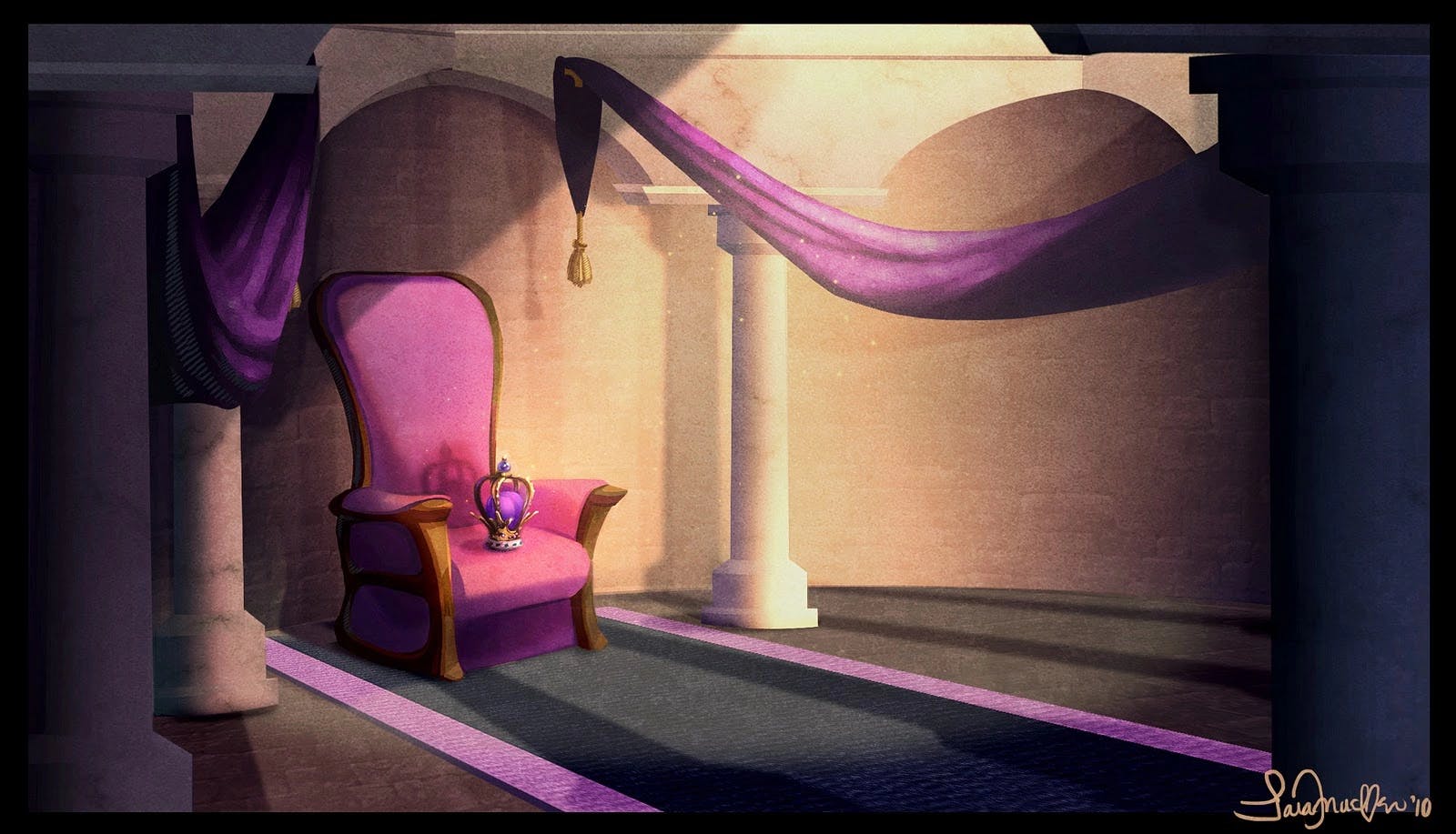
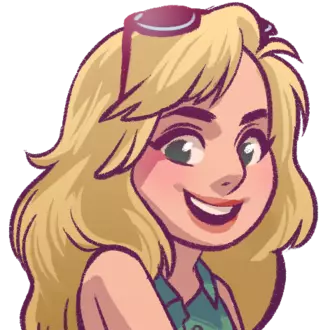
Finding Solace with Creativity
Tara Mueller: My parents were both very supportive. My mom is an artist herself, and I remember being totally in awe of the little doodles she would make while she talked on the phone, and then I would ask her to teach me how to do them. Looking back, I realize that was how I learned to do construction sketches before the final drawing. She also had a huge repertoire of art and craft supplies because she did a ton of DIY interior decorating, baking, sewing, gardening, painting, etc.
And she loved doing those kinds of activities with me and my siblings while we were young. My dad studied computer science and worked at a tech company, so he bought a computer before a lot of people had them in their house and taught us all how to use it. He’d install a bunch of games, but because I liked to draw, he also put a lot of art and animation programs for me to use. My sister and I would spend a lot of time drawing and making little animated movies in programs like KidsPix.
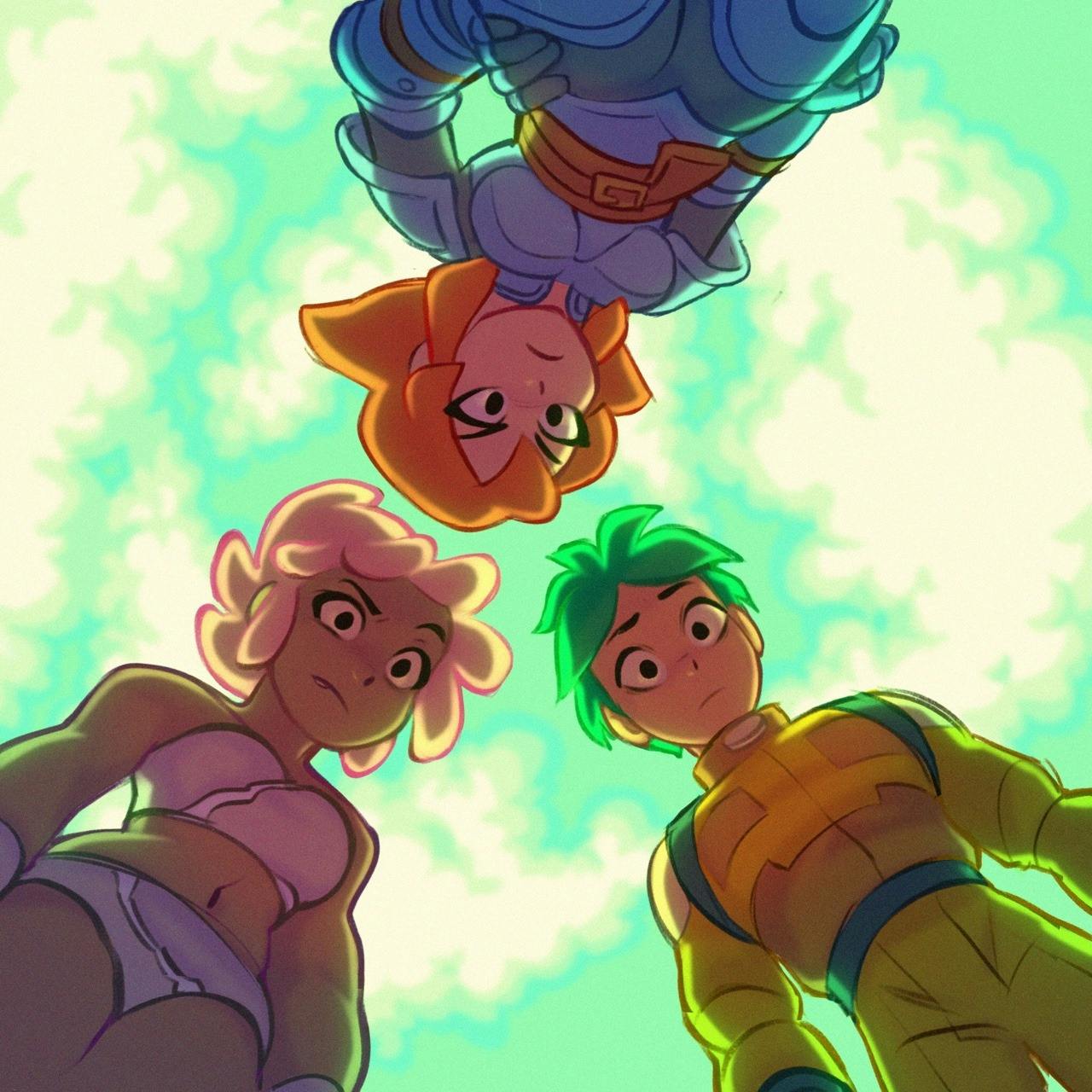
Tara Mueller: I think when it comes right down to it, the thing that inspires me the most is a good story. Throughout my life, I’ve been prone to developing an intense interest in certain stories and their worlds and character. Whether it’s in a book, a movie, a game, or a tv series, that fuels my need to create for a pretty long time until the itch is scratched, so to speak! It’s just that when something captures my imagination so intensely, I have to express that excitement and explore my curiosity through some kind of contribution, and the most rewarding thing about it is when you create something that reaches other people who are also eager about the thing, and then you find a community of people to share your excitement with.
I think another thing that inspires me is just learning something new, so a lot of times I’ll get hooked on practicing a new kind of creative expressions such as web design, baking, or 3d modeling, and I’ll just dive deep until I’ve satisfied my curiosity. I think that’s how I’ve ended up with a pretty random set of skills, but it has come in handy professionally!
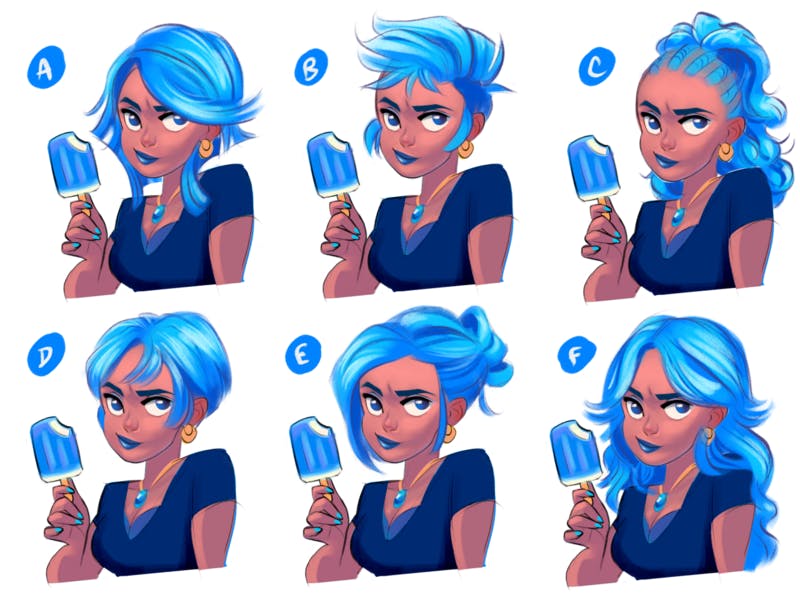
Tara Mueller: Haha, I think I’m just excited by bold and fun color combinations. If I’m making something for fun, I usually just gravitate to those kinds of palettes without thinking too much about them. But since you’ve asked, I’m dissecting my thoughts a little bit more, and I think that whether it’s a palette that I’m just making up as I go along, or maybe a combination I saw somewhere, the main thing I’m focused on is creating interesting juxtapositions, and my process is usually something like picking one accent color, and then picking other colors that make it pop.
I find working with a limited palette helps keep things looking intentional and clean, and it’s easier to control the contrast between your colors. Lastly, I use my accent color in the places that I want people to look at.
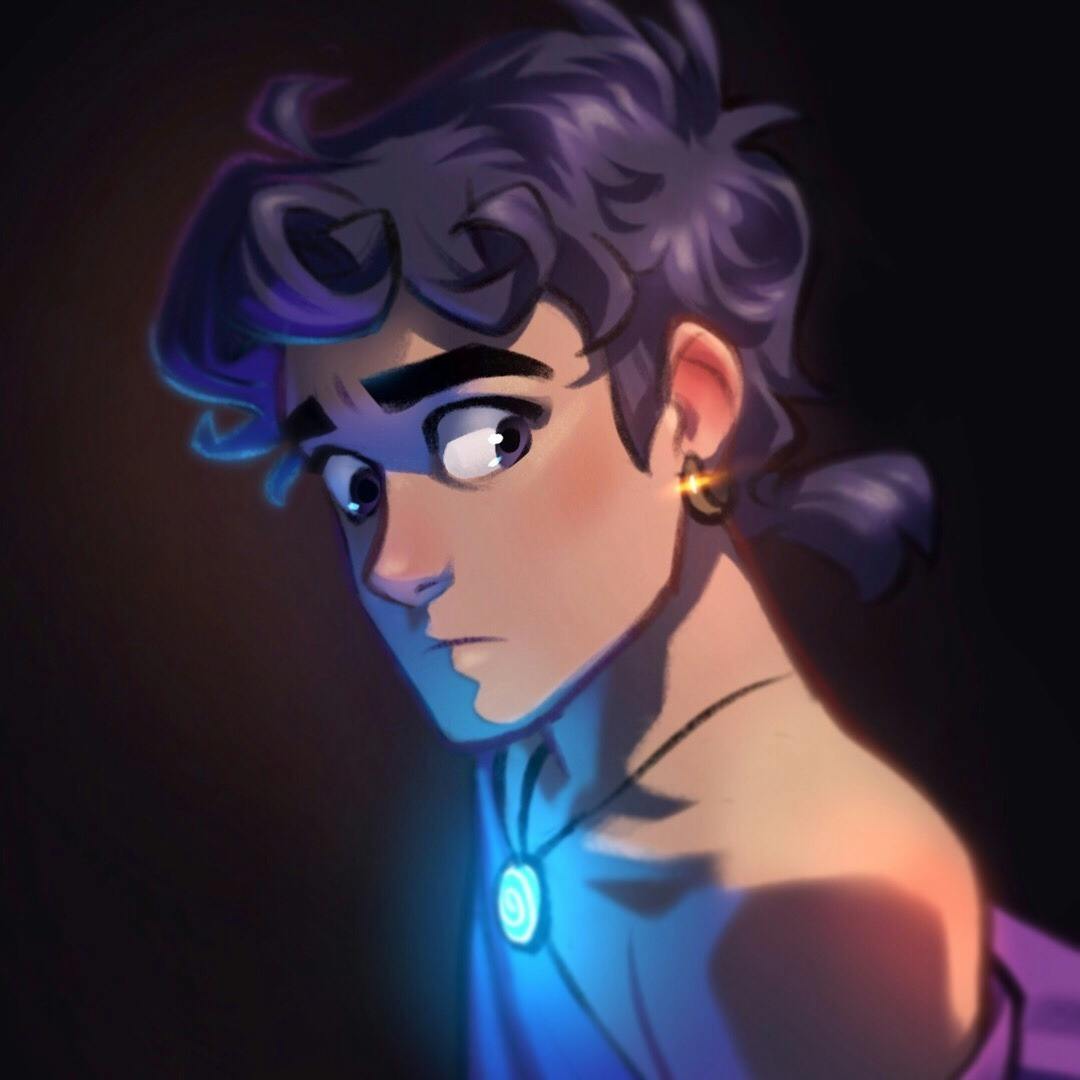
Tara Mueller: When I was in art school, someone told us that some artists visualize in 3D and some in 2D. The people who think in 3D tend to have more volumetric-looking work while 2D thinkers tend to excel at graphic styles. I don’t know if that’s true or whether there are only two types of artists, but I always think in 3D.
Even when I look at a graphic 2D image, I try to create a mental model of how it looks in 3D space. So for that reason, I felt like it’s easier to translate my ideas into 3D than 2D. I’ve always liked sculpting with clay, so learning 3D modeling and sculpting was kind of an extension of that. But then of course, what it was missing was the final tangible product, so that’s why I became interested in 3D printing.
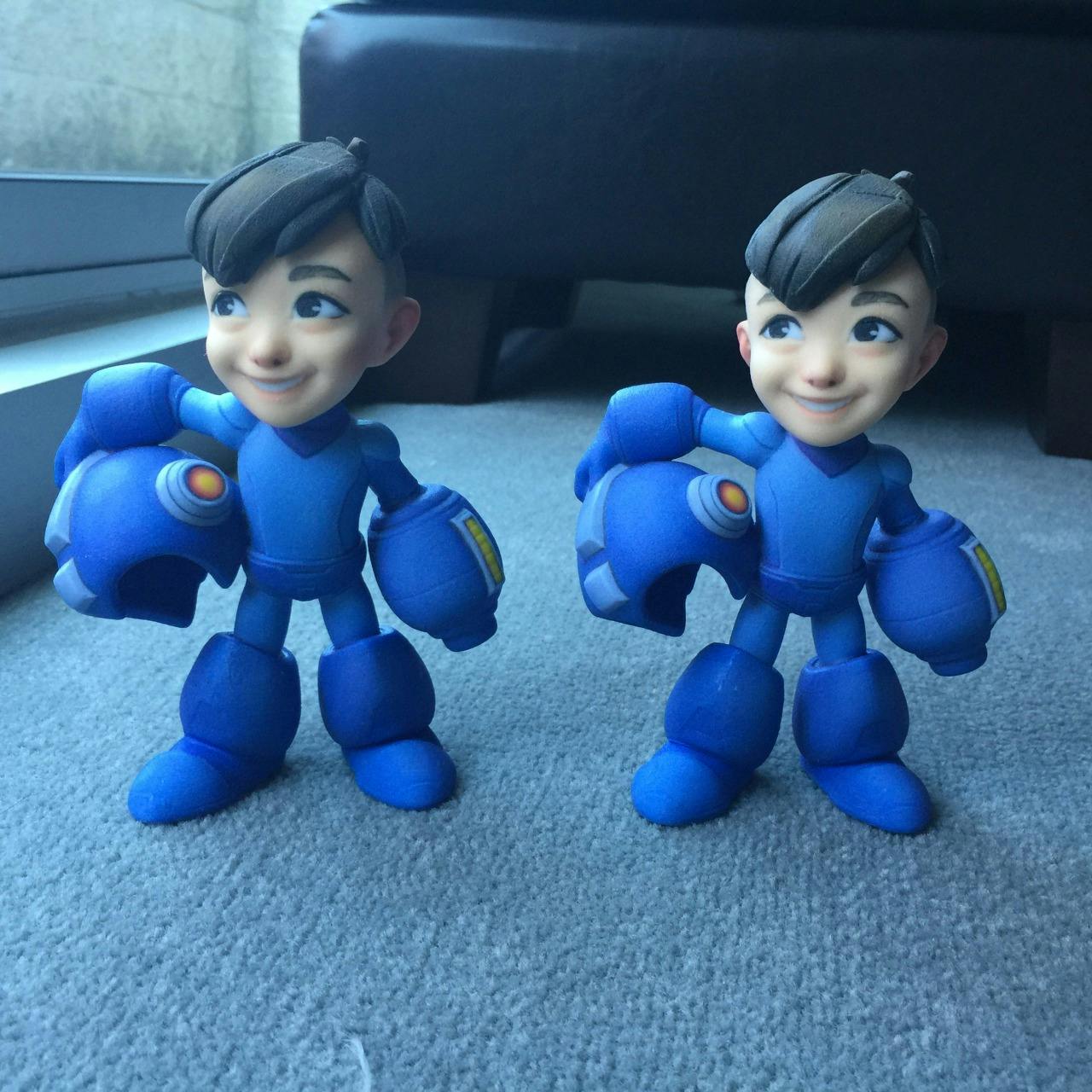
To give me an excuse to practice, I started making 3D-printed sculptures as birthday gifts for coworkers and lots of people would chip in for the printing cost because they can get a little expensive! We’d pick a subject to sculpt, usually, a character they made up, or something they were a fan of like dinosaurs, a caricature of themselves, or one time it was even just a funny sticky note doodle they’d stuck to their desk. I’d make a sculpture in Zbrush which is a lot like making a sculpture out of traditional clay. I usually didn’t plan orthography ahead of time because again, I just find it makes more sense to me in 3D anyway, so I’d usually just do most of the thinking in Zbrush.
There’s a little bit of a setup that you have to do to 3D print, and it also depends on the medium you’re printing in. But mostly, you need the model to be hollowed out so that you’re not using too much printing material, and sometimes you have to split the model up into parts if the final dimensions are bigger than the size of the printer. In that case, you usually want to model some “joints” so that the pieces fit together when you join them. You also have to pay attention to the minimum thickness required for the material you’re printing, for instance; colored sandstone is more fragile than plastic.
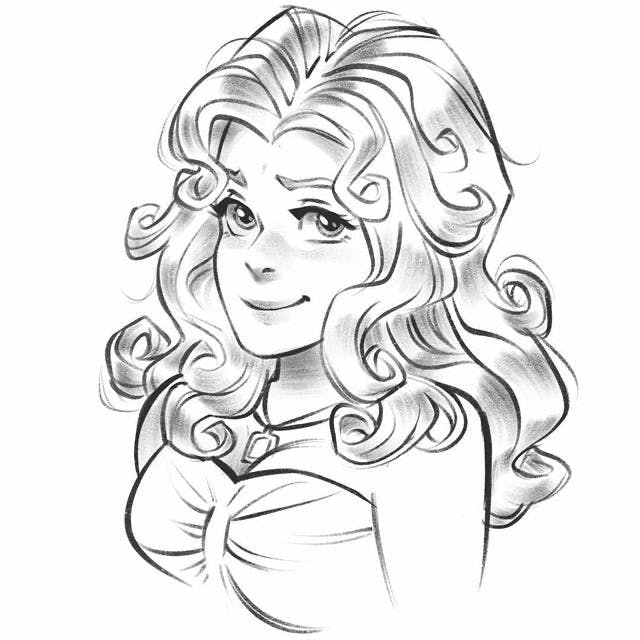
I usually used Shapeways to do all the printing, and sometimes that would be the material used in the final product, whether I hand-painted it or printed it with texture. But a couple of times I’ve done commissions where I’ve used the printed model to make a mold and then I cast the model out of polyurethane foam to make a squishy character etc. I still do not own a 3D printer just because the desktop versions don’t have the resolution I want, or if they do, they’re at too high of a price point for the frequency at which I do those kinds of products. So Shapeways is a good option if you’re doing just a few models a year and want high-resolution results in any number of materials.
Tara Mueller: I think the best I can do is divide my favorites into two categories, so hopefully that’s not too much of a cop-out! First, professionally, I love developing stories, so anything to do with contributing to the creation of a world and characters is very appealing to me, especially a combination of writing and storyboarding. But I think something that I’m equally drawn to, but so far has been more of a side hustle and hobby, is product design. Especially toys and merchandise. Stuff like that always catches my eye, and there’s something so satisfying about having a tangible, useful, well-designed product.
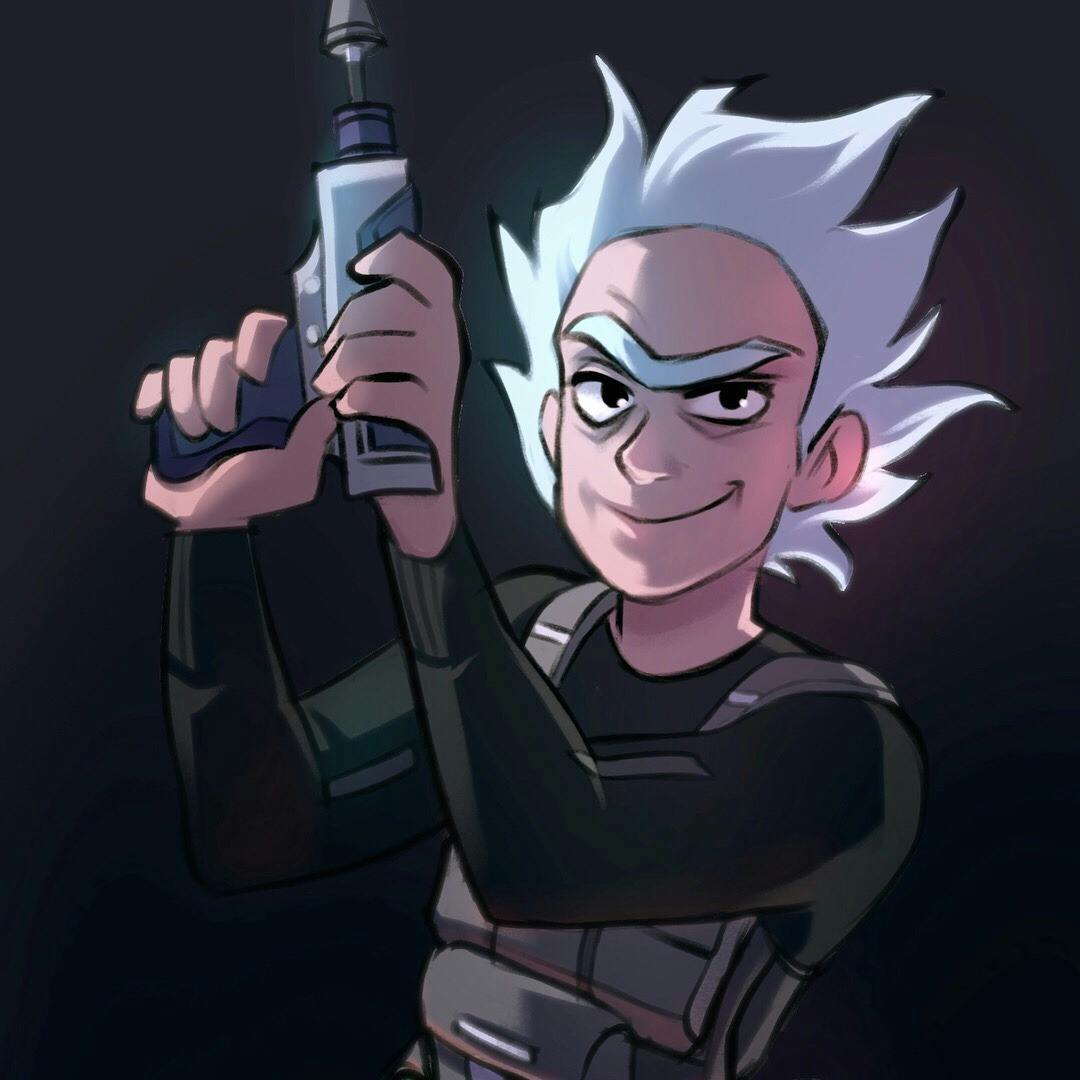
Tara Mueller: So first of all, I make storyboards for webcomics, so there are different things to consider when making storyboards for animation. But, I’ve also found that a lot of things do carry over, e.g. continuity rules, shot composition, camera angles, and even camera “moves”, so I feel that my background in animation has come in handy for those reasons. I’d say Webcomics (at least in the western world) are kind of at the same stage that mobile games were like 10 years ago or web design in the early 2000s.
As in, it’s kind of new, a lot of people have been working on it or something similar for a very long time, possibly decades, but we’re just starting to understand the potential and we’re starting to develop best practices, and streamlined platforms, etc. that propel the medium to the next level. Even 5 years ago when I started making webcomics, people were still using a lot of traditional comic techniques in their webcomics.
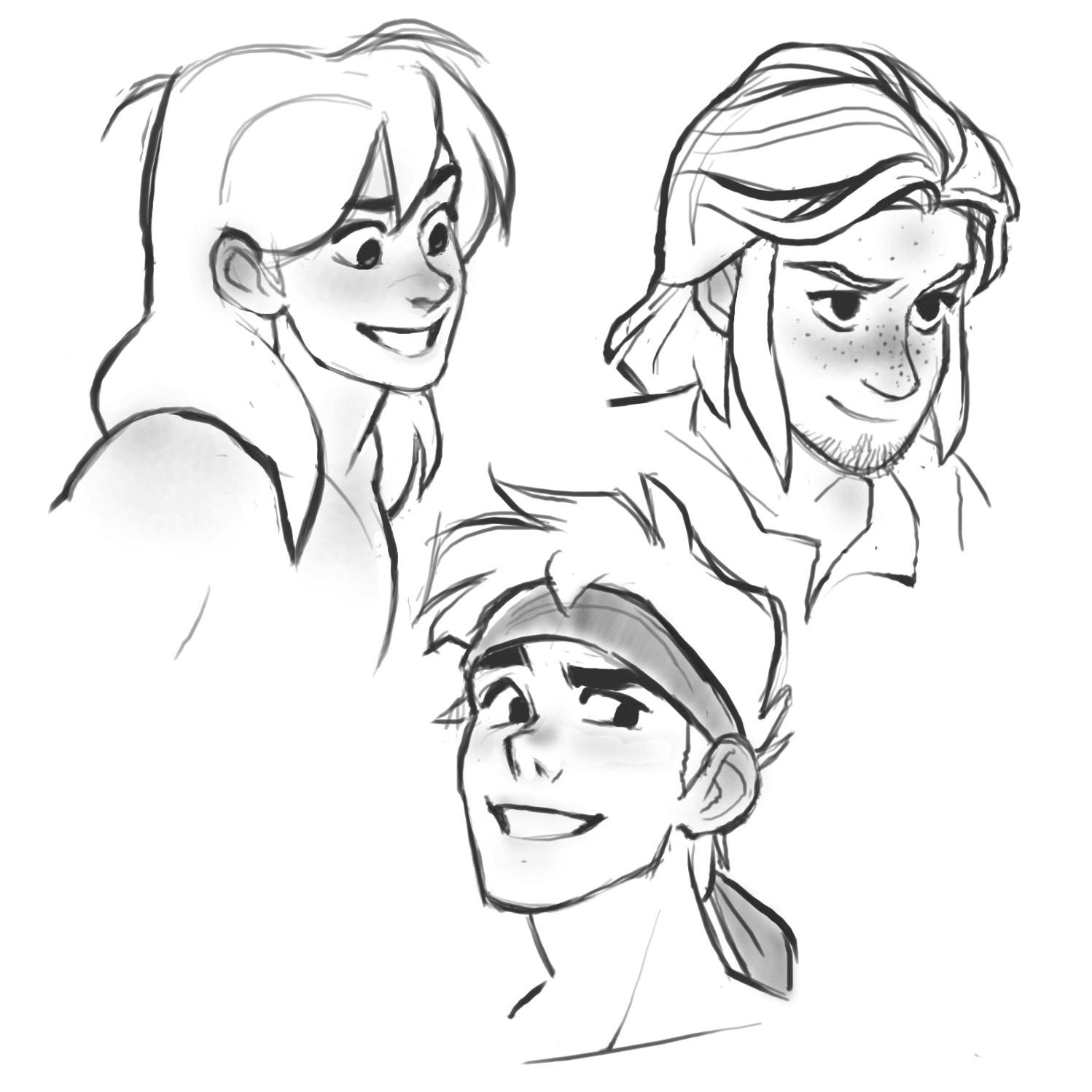
Now, it’s more optimized for the way people read online, and the best way I can describe it is that webcomics are kind of a hybrid between a film strip and a traditional comic. That’s because the most natural way to read a comic online at the moment is to scroll vertically. Therefore, the panels tend to be arranged one at a time in a vertical stack from top to bottom. That maximizes the amount of screen real estate you can use for your panel, which makes it easier to read and equates to less eye strain even on smaller screens because, as a film, people are viewing your work on all sizes of those.
Similarly, but different from film, you have to not only think left-to-right but also top-to-bottom. So if you lead your viewer’s eye to the right in panel 1, their eye will land top-right on the next panel. You can create some cool visual flow this way, the same as you can with traditional comics, but you also have to keep in mind that when the viewer gets to the next panel, they don’t still have the previous panel on the screen for context because they’ve already scrolled past. So in that sense, you plan more like you would for a new shot in a film. Also, just like in animation, if you’re drawing storyboards for an artist to make final panels, your drawings must be clear.
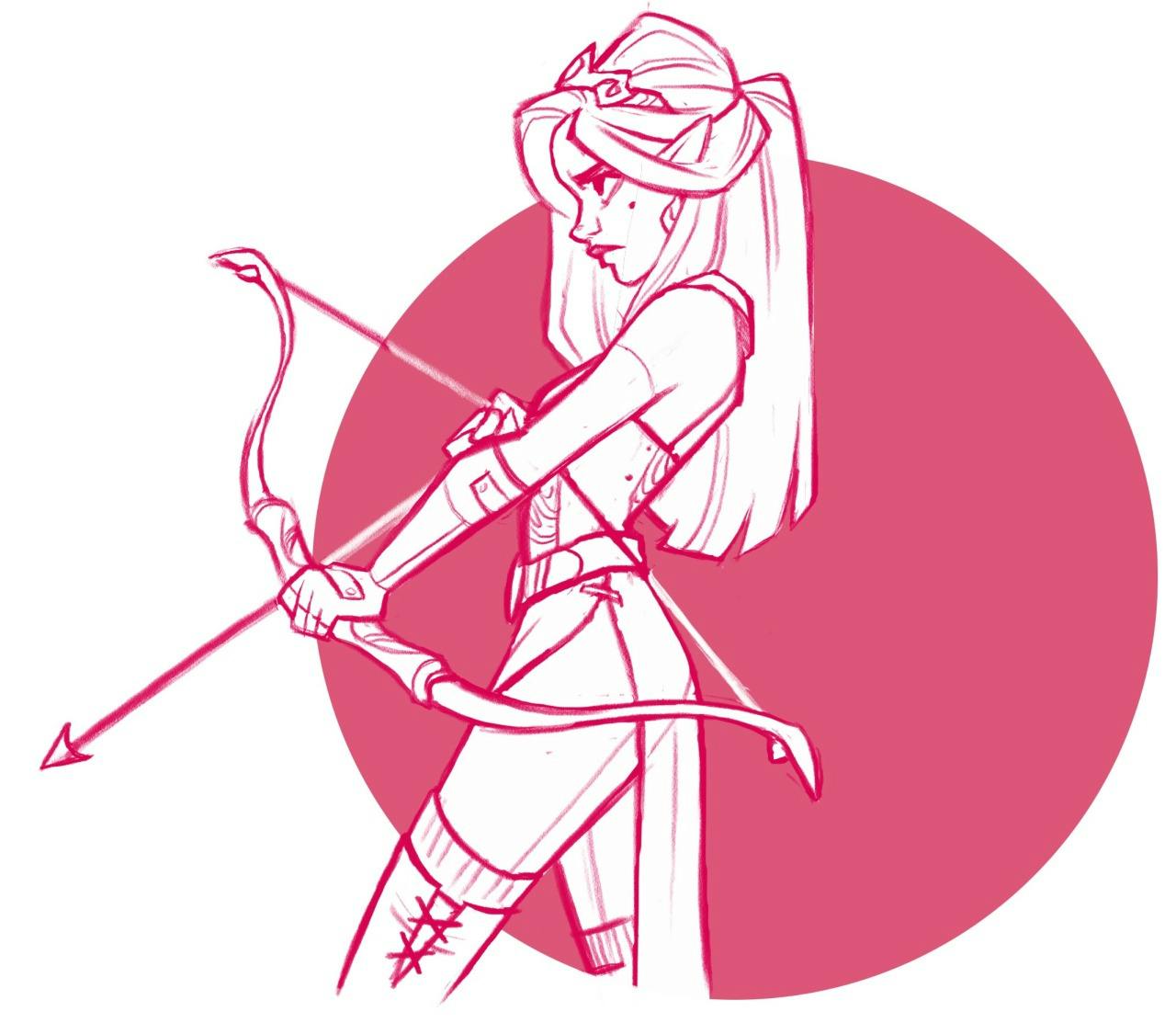
Tara Mueller: Honestly, it’s hard to emphasize just how profound of an impact that whole experience had on my life, let alone my style and creativity, but I will try to provide some cliff notes. When I started working in games, I was new to the industry and had never worked for a huge corporation before.
At first, it was daunting because I’ve always been shy and introverted, and 40 or more people were working on these giant game teams that all had to somehow organize and communicate to get this giant project done within a specific budget and time.
“I love developing stories, so anything to do with contributing to the creation of a world and characters is very appealing to me, especially a combination of writing and storyboarding. But I think something that I’m equally drawn to, but so far has been more of a side-hustle and hobby, is product design.”
That environment challenged me to overcome my shyness and I realized I had a lot to say and a lot of ideas to share, I enjoyed problem-solving and working with groups. It was a huge confidence boost and I’m a completely different person because of it.
I was also incredibly lucky to be able to take advantage of the leadership training resources provided by the company I was working for. I even ended up art directing on a few game titles and managing teams of over 20 people, including junior managers. The artists I worked with were an inspiration and all so incredibly talented.
Definitely, I grasped some great techniques and expert tips and tricks, but I also learned humility and appreciation for the wide diversity of experiences and thoughts, and approaches it takes to produce something like a video game. I learned time management strategies, organization, forecasting, and business practices from top-of-their-class professionals.
I would recommend it to anyone who is interested in starting their own business and has the opportunity to work at a large company to do it and learn everything you can from the incredible pools of talent, resources, and knowledge to learn exactly what it takes for a successful business to run!
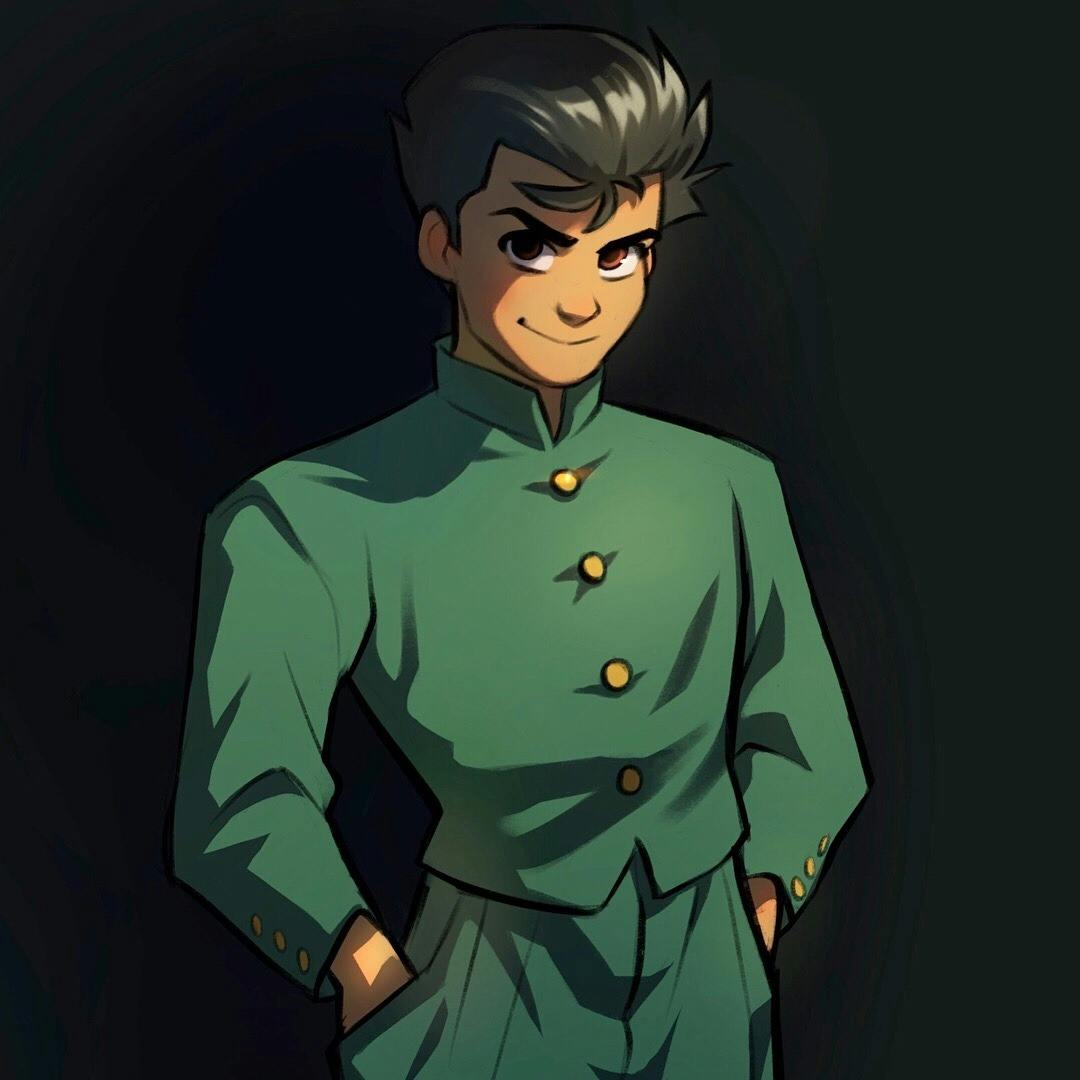
Tara Mueller: Toonimated is currently a webcomic studio owned by my husband and me. My husband is an artist too and we always wanted to have our own company, but for a lot of years, we were uncertain about what we wanted. For a while, we started designing some little games, but then we realized we should focus on storytelling.
My husband is an amazing animator, but the animation is time-consuming and we didn’t have the budget to hire a team. I was reading a few animated webcomics at the time and we realized that would be a pretty good compromise.
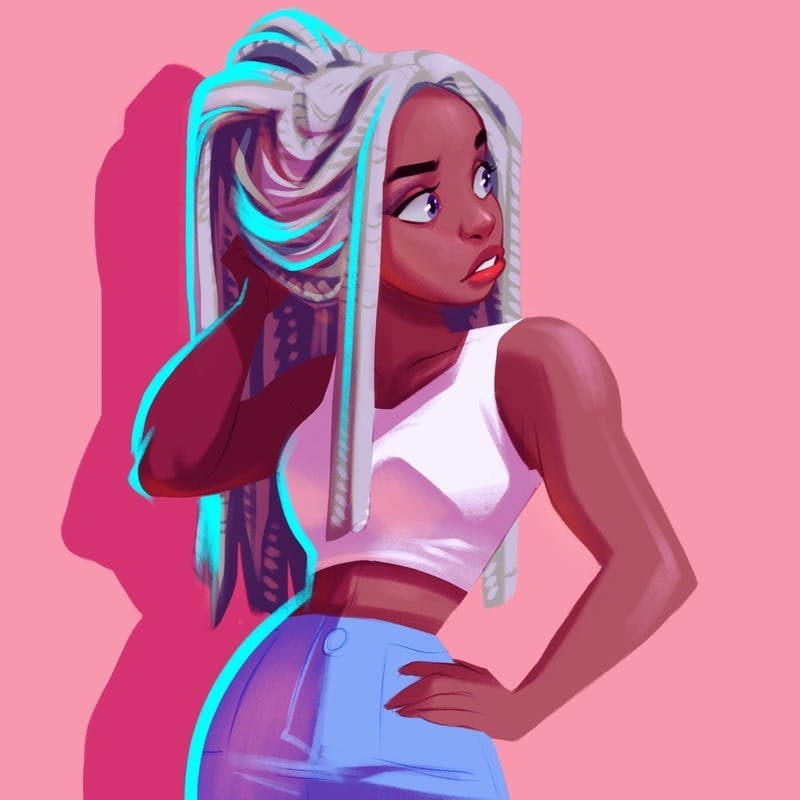
Animated was my husband’s online handle, we liked the name and he had a pretty healthy social media following, so it made sense to use it. We registered Toonimated and formed an LLC. Then we contacted the major webcomic platforms to pitch our story. We ended up getting a publishing deal on Line Webtoon and released our first series “Room of Swords” in 2017. At this point, we’ve built out more of a team and have some unannounced projects brewing.
Our vision for the studio is to continue to grow and run more series with their writing and art teams, and eventually license the stories to film and game studios.
Tara Muller: Room of Swords is a time-traveling, interdimensional, sci-fi adventure inspired by our favorite video games and geeky interests. We explored a lot of ideas before landing on Room of Swords. Ultimately, it was after watching an episode of Twilight Zone where 5 characters with nothing in common all find themselves in a mysterious place and have to figure out where they are / how to escape.
We were also fans of a rock opera with a similar premise and thought it would be intriguing to have people from different eras of human history all abducted and plunged into a random video game adventure together. It’s been a lot of fun to write, and also a huge learning experience!
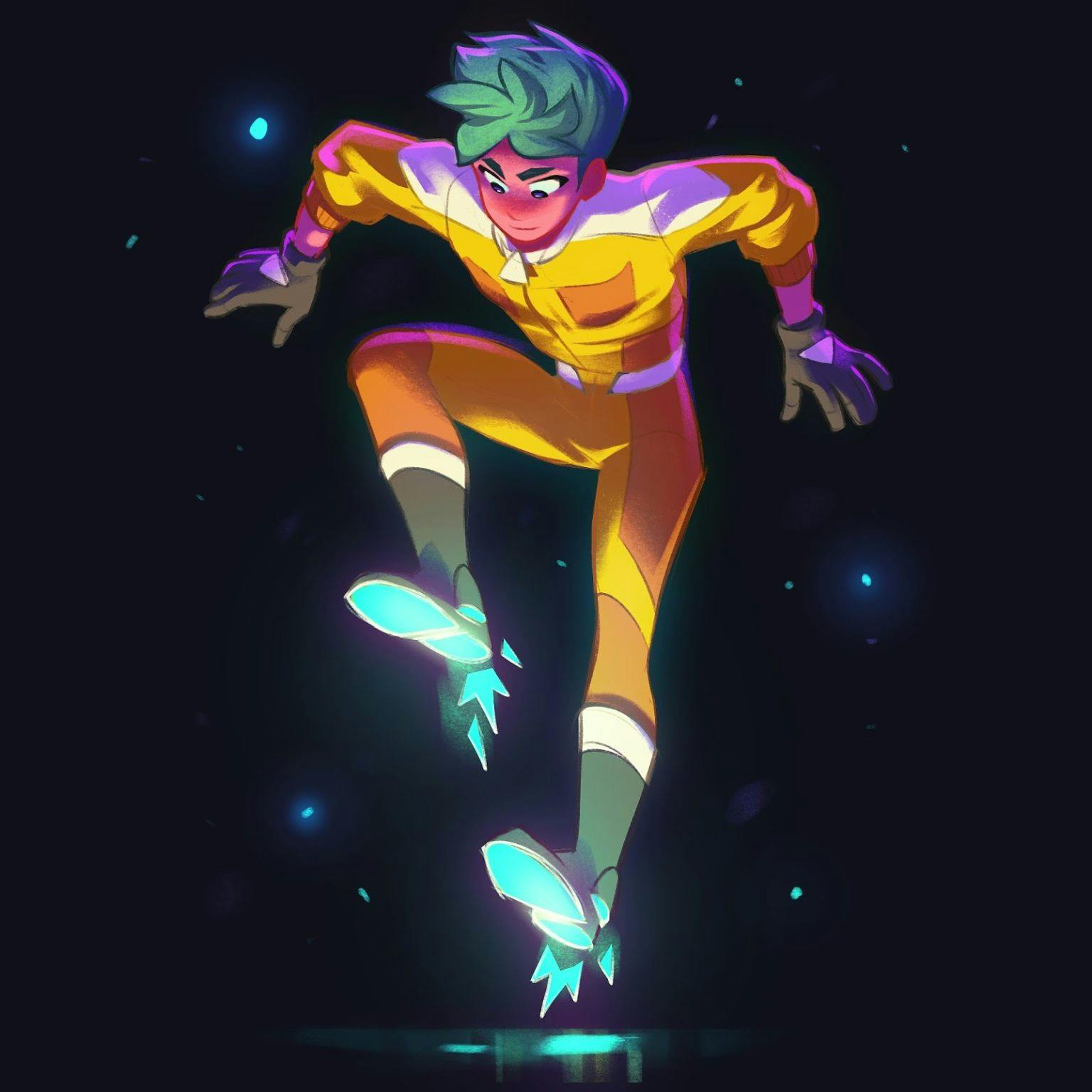
Tara Muller: Believe in yourself and know your value. Don’t burn bridges. Being consistent and reliable is more important than being perfect. Making art is fun, but being an artist can be stressful, so try to remember to be kind to yourself and enjoy your work!
